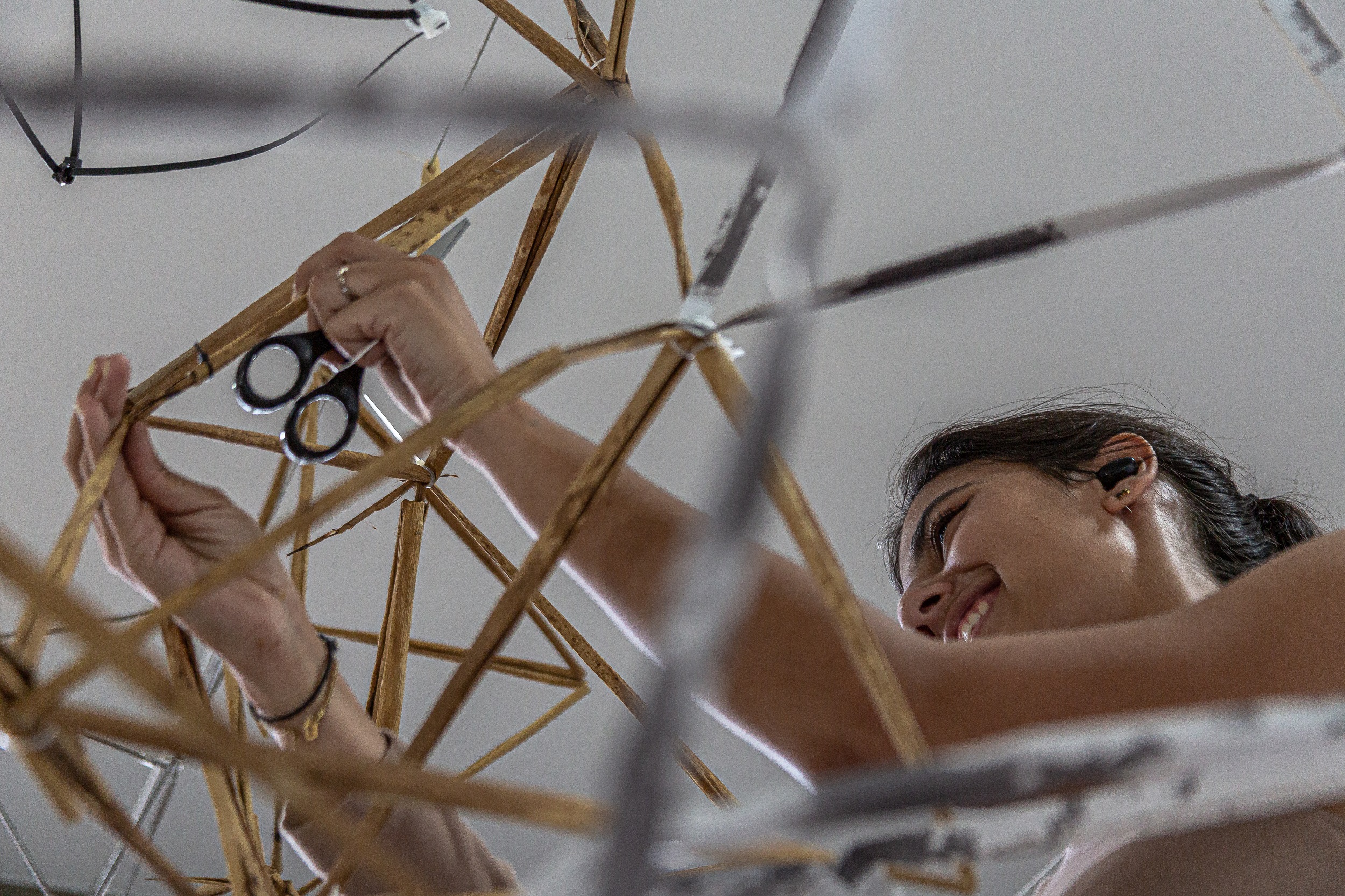Open Call
The call invites people whose artistic, pedagogical, or research practices are nourished by or address the work of Gego. In this way, the project seeks to map contemporary legacies of the artist in Latin America, as well as to create a cartography of contemporary practices. A network of Venezuelan artists living abroad will offer their studio spaces as collection centers for the pieces-modules, which will later be shipped to Caracas for assembling. Esperanza Mayobre, Lucía Pizzani, Jaime Gili, Elías Crespin, Fabiola Arroyo, María Antonia Rodríguez, Beto Gutiérrez, Valentina Alvarado, Augusto Gerardi, Miguel Braceli, Andrés Michelena, Lenin (Federico) Ovalles, Elisa Bergel Melo, Camilo Barboza and Gabriela Quero are collaborating with their studios to receive pieces in Latin America, Europe and the United States, while the Goethe-Institut Venezuela will receive the contributions in Caracas. The pieces will be received from December 1 2023, through January 15 2024. Click here to learn more about the ways to participate.
Exhibition
The sum of all these diverse pieces will give shape to the Collective Reticulárea, which will be displayed at Sala Mendoza in Caracas. The exhibition will be open to the public from February 24 through April 20 2024, along with an educational program focused on broadening the panorama of Gego's pedagogical research and the relevance of her legacy for the history of art in Venezuela and Latin America.







